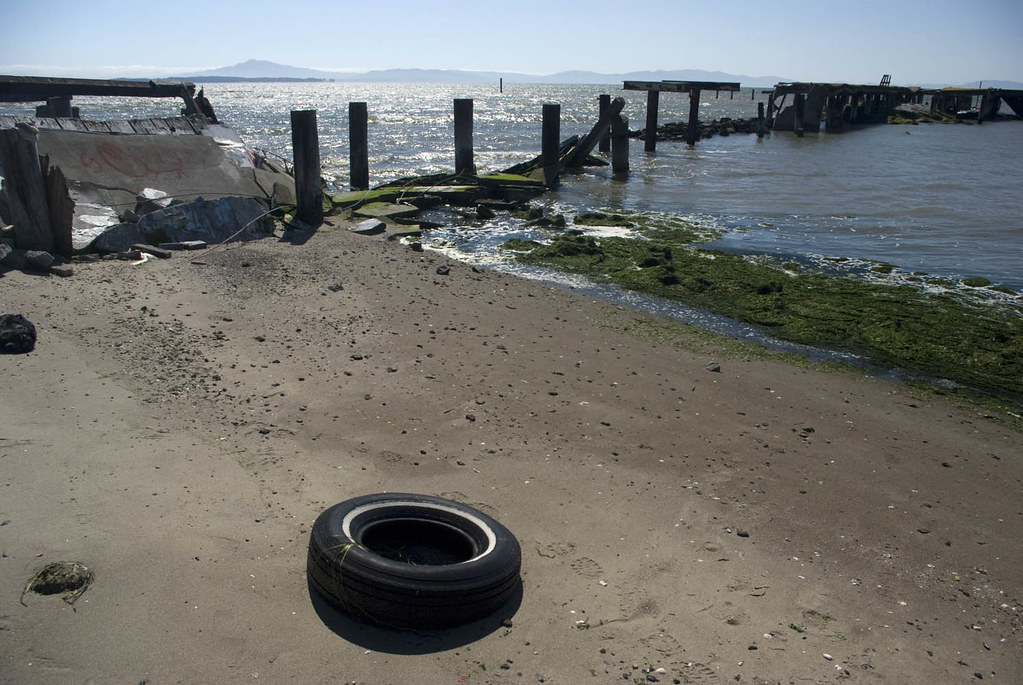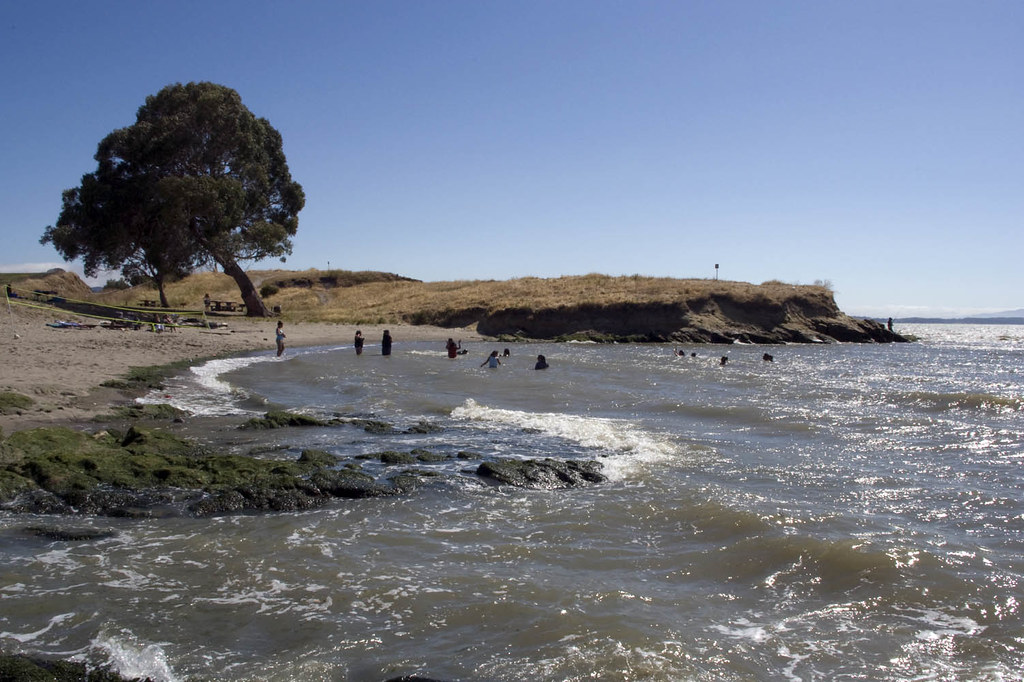Eckley is my new favorite place to bring the kayak. Eckley is between Port Costa and Crockett (in Contra Costa County, California, USA, northern hemisphere, urf, etc.). The Eckley pier is part of the
Carquinez Strait Regional Park, accessible thru the Bull Valley Staging Area on the Carquinez Scenic Drive. There's no fee for park entry. There's lots of parking, and a few 5-minute parking slots near the pier for loading and unloading. Eckley has a picnic area, a latrine, tap water and drinking fountains, and a popular fishing pier. There are hiking trails in the park you can use if you don't feel like paddling, and if you need snacks or beer or bait it's a short drive to the J&L market on Pomona in Crockett.
Getting to the water requires crossing train tracks:
Don't be too casual about crossing the tracks, since Amtrak and freight trains come thru often. The crossing is paved, so it's possible to tow a kayak on a cart over the tracks. Be sure to consider what could happen if you drop something, or if the kayak slips off the cart, when a train is coming - the possibilities are endless, and perhaps comical, but you may as well wait for the train to pass, and
then cross.
You can't launch from the fishing pier, so use the gravelly beach on the west side of the pier:
There's another gravel beach downstream that has some shade, if you don't mind carrying your gear next to the tracks for a couple of minutes. I suspect that the water at either beach is very shallow at low tide; there's a probably-up-to-date tide table posted next to the walk at the end of the pier if you need to double-check once you're there. When the tide's high - maybe 5' plus - there's a beach to the east of the pier, but it turns into a pile of bricks when the water level drops, and I think you'll be better off avoiding it.
Here's the pier, with Glen Cove opposite:
Looking from the shore at the pier towards the Carquinez bridge:
The big rusty heap next to the pier is the remains of a train ferry called
Garden City. When the tide is really low you can walk thru the mud to the wreck for a photo op. (Wear shoes, in case there is broken glass and other crap in the mud, but don't wear expensive shoes because they could get stuck.)
There were once wharves along the shore between Port Costa and Crockett, and now there are hundreds of pilings where the wharves were. Some of these (especially upstream) may be barely submerged, so look out for those. And I may as well mention the usual warnings for this area: watch for strong currents and high winds; look both ways before crossing the strait, so you can stay away from tugboats and shipping traffic. You may upset the people at C&H if you get too close to their waterfront, especially when a ship is arriving or leaving (but this area should be considered required exploring in spite of that). It's probably best not to go near the oil terminals (upstream at Martinez and downstream at Selby) either (but that doesn't mean you can't do it anyhow). The area near the Crockett marina, the Al Zampa bridge, the Cal Maritime campus, and Mare Island can get kind of rough when it's windy (which happens in the afternoon on most summer days). (This might be more of a problem for those with touring kayaks than for those with modified river kayaks; I don't know, since I've never had a touring kayak.) And the reserve fleet is off-limits, if you get that far upstream, so be careful not to get caught.
And don't forget to put your cheesy compact digital camera in a plastic bag so you can take fabulous pictures like this:
(This is the one picture that I took from the kayak that wasn't spoiled by water drops on the plastic bag.)
(And while you're there, check out the fabulous panoramic image of the park on the Regional Park signs!
I've heard that the photo credits make especially good reading! Share and enjoy!)























